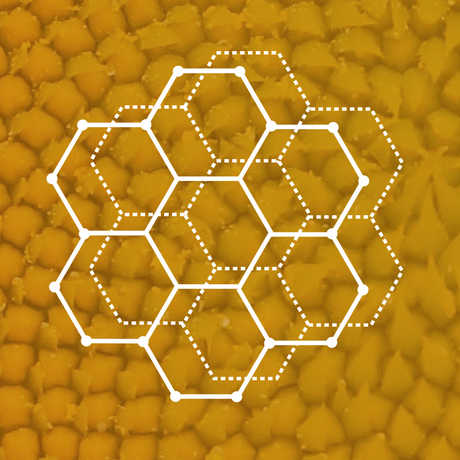This activity consists of a PowerPoint presentation and two group discussions. The notes below describe our talking points for the slides in the presentation. Please do not view this as a script; rather, adapt the talking points to your own presentation style.
Note: to view these talking points alongside the slides, download the full lesson plan.
Part 1: Philosophy of the DCIs (5 minutes)
SLIDES 1-4: The Cake Metaphor
- Introduce or reiterate the metaphor. (See Introduction to the NGSS for more explanation.)
- The cake part of the dessert represents the DCIs—as opposed to the frosting (Crosscutting Concepts) or baking tools and techniques (Science and Engineering Practices).
- If you are not using the metaphor, skip or delete these slides.
SLIDE 5: First goal of the DCI structure–going deeper
- The structure moves away from the “mile wide, inch deep” approach to science education.
- Compare to the old California State standards that look like a laundry list of facts, “students know this... students know that...”
- To clarify, read out the quote from the framework, or ask a participant to read.
SLIDE 6: Consequences of this goal
[Note: Two new quotes will appear on the right side of the slide to be read here. The original quote from above also remains on the left.]
- To make room for deeper understanding and incorporate two other dimensions with equal standing (SEPs and CCCs), some things have to be removed.
- We all may have that one favorite activity or subject that we just love to teach.
- However, in order for this shift to be successful, educators have to be willing to let go.
- Remind participants: while this may seem frustrating, keep in mind that the potential benefits are powerful and very much worthwhile.
SLIDE 7: Second goal–Learning as a progression
- Structure is intended to create a clear and solid progression of ideas from K through 12, building and deepening student knowledge in developmentally appropriate ways
- Not a new idea
- NGSS implements this idea in a very robust and intentional way
Part 2: Structure of the DCIs (5 minutes)
Transition to Part 2: Now that we’ve touched on the philosophical underpinnings of the DCIs, let’s explore how they are structured. It looks complex at first glance, but they do have a clear hierarchical structure. Let’s explore it one layer at a time...
SLIDE 8: DCI structure from the top down
- You start with all of science.
- Everybody with me so far?
SLIDE 10: Disciplines, abbreviated
- To keep things simple, these four disciplines are abbreviated
- Ready for the next layer?
SLIDE 11: Disciplinary Core Ideas
- Each Discipline is divided into a handful of Disciplinary Core Ideas, or DCIs
- These are the big ideas of each field
- They appear consistently from K –12
- They are identified using discipline abbreviations and numbers
- e.g.: PS1, PS2, PS3, etc.
SLIDE 12: Why these DCIs?
- Four criteria were used in deciding on and crafting the DCIs.
- Read out the criteria, or ask for volunteers to read them.
- In order to be chosen as a DCI, an idea had to meet at least two of these criteria.
- Ask participants: What do you think about these criteria?
SLIDE 13: The DCIs!
- Put this slide up for participants to read, and move into the activity described in Part 3.
- Return to the previous slide after passing out the Disciplinary Core Ideas handout.
Part 3: DCI Criteria Discussion (10 minutes)
1. Pause here and distribute the Disciplinary Core Ideas handout, which is identical to slide 13. Move back one slide to display slide 12 so that participants can refer to it.
2. Tell participants to discuss the DCIs in small groups. Their task is to look at each DCI and decide whether they think it meets the criteria outlined on slide 12, as well as sharing any other observations about the DCIs. Acknowledge that there is only so much you can tell based on these titles, but just base this discussion on first impressions.
3. Give participants 5 – 10 minutes to discuss this in small groups.
4. Lead a discussion with the whole group, asking them to share their first impressions of and observations about these DCIs.
- We don’t find it to be worth the time to discuss each DCI in turn; just ask for general impressions and observations.
5. Someone will almost always ask “what the heck does PS4 mean,” so be ready to share a general definition of that DCI. NGSS@NSTA has an easy to navigate overview of the Physical Sciences DCIs and component ideas. After this discussion, continue with the powerpoint:
Part 4: Component Ideas (5 minutes)
SLIDE 14: The next layer
- Return to exploring the hierarchical structure of the DCIs.
- This is where we left off—there is one more layer!
SLIDE 15: Component Ideas
- Each DCI is further subdivided into component ideas
- Number of component ideas ranges anywhere from two (LS3) to five (ESS2)
- Component ideas are more specific concepts within those broader DCIs -They also build from K – 12.
- They are identified using DCI codes and letters
- e.g.: PS1.A, PS1.B, PS1.C, etc.
Part 5: DCI Progression Discussion (10 minutes)
1. Acknowledge that there is no way we can look at each of these component ideas in the time that we have together. Instead, we will zoom in and focus on one component idea as an example.
2. Distribute the “LS1.B Sample DCI Progression” handout. Instruct participants to work in small groups to explore and discuss this progression. They should talk about how it builds from the lower grades to the upper grades and anything else they notice and wonder about it.
3. Give participants about 5 minutes to discuss this in small groups.
4. Lead a discussion with the whole group, asking participants to share their observations and questions.
- Often participants will ask about the gaps between grade levels. Clarify that the component ideas do not show up in every single grade band; rather, each grade will contain a mixture of different component ideas. However, each component idea is hit at least once in each grade band (K-2, 3-5, 6-8, and 9-12).
- Another point that often comes up here is the importance of all teachers in a school/district fully committing to this content shift. If some teachers switch to the NGSS content and others don’t, students will miss chunks of this structured progression of ideas.
- Try to steer participants away from getting stuck on sentiments like “well then this will NEVER work because there’s NO WAY everyone in my district will make the shift” or “well then it will take 12 YEARS for this to start working because students need to start this from Kindergarten for it to work. ”Remind them that this is not a problem unique to the NGSS, and for most teachers, we have never been able to depend on our students coming into our classroom with the exact right set of prior knowledge in place. You already have strategies that you use to cope with that, and those same strategies will help you and your students through this transition.
Next steps
- This is a good time to introduce Appendix E: Disciplinary Core Idea Progressions in the NGSS.
- If your participants are already familiar with how to read the NGSS tables, have them take a look at the tables for their grade levels and explore the component ideas that show up there. However, if they are not yet comfortable with reading the tables, save that for another time.


